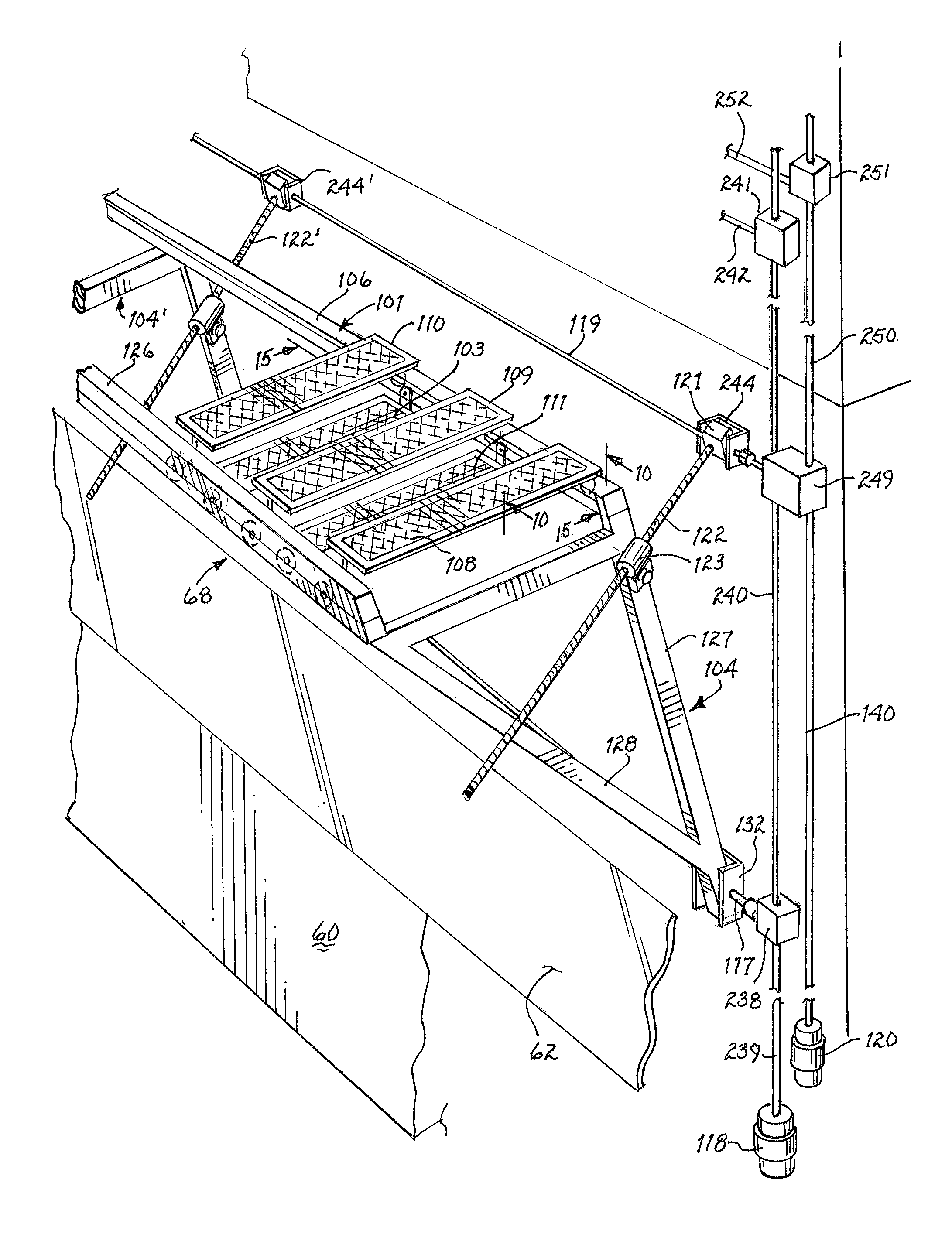Solar window shade
a technology for solar energy and window coverings, applied in sunshades, door/window fittings, constructions, etc., can solve the problems of affecting the view of the occupant through the window, affecting the effect of the remaining hours of the day, and affecting the occupant's view, etc., to achieve the effect of minimizing the amount and maximizing the diffuse ligh
- Summary
- Abstract
- Description
- Claims
- Application Information
AI Technical Summary
Benefits of technology
Problems solved by technology
Method used
Image
Examples
Embodiment Construction
[0061]In FIG. 1, a multiple-story building 102 includes a southerly-facing wall 60 and a westerly-facing wall 61. Building 102 includes, of course, northern and eastern walls, not shown in FIG. 1. Wall 60 includes upper and lower banks of windows 62 and 63, respectively. Likewise, wall 61 includes upper and lower banks of windows 64 and 65, respectively. The sun's rays 66 are shown low in the eastern morning sky.
[0062]Installed upon the exterior of wall 60 are a series of solar window shades, constructed in accordance with the present invention. The upper bank of windows 62 is shaded by solar window shades 67, 68, and 69, while the lower bank of windows 63 is shaded by solar window shades 70, 71, and 72. All of the solar window shades 67-72 are shown pivoted downwardly to approximately the same height as their associated windows to block direct rays of incident light from the early morning sun.
[0063]Similarly, solar window shades 73 and 74 are installed proximate upper window 64 of ...
PUM
 Login to View More
Login to View More Abstract
Description
Claims
Application Information
 Login to View More
Login to View More - R&D
- Intellectual Property
- Life Sciences
- Materials
- Tech Scout
- Unparalleled Data Quality
- Higher Quality Content
- 60% Fewer Hallucinations
Browse by: Latest US Patents, China's latest patents, Technical Efficacy Thesaurus, Application Domain, Technology Topic, Popular Technical Reports.
© 2025 PatSnap. All rights reserved.Legal|Privacy policy|Modern Slavery Act Transparency Statement|Sitemap|About US| Contact US: help@patsnap.com



